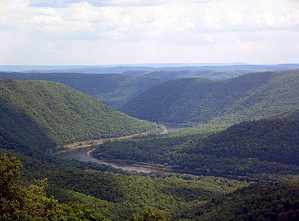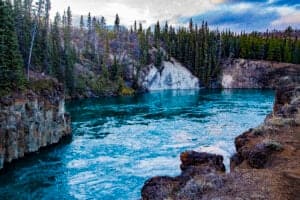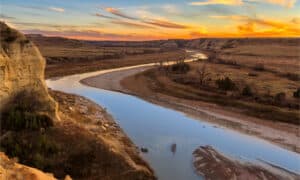The Klamath River is a massive body of water that flows through Oregon and Northern California. It is 257 miles long, and the watershed it drains is a whopping 16,000 square miles. The Klamath River begins at Upper Klamath Lake, a 25-mile-long lake near Klamath Falls, OR. Upper Klamath Lake is the largest freshwater lake in Oregon. From Upper Klamath Lake, the Klamath River runs through the Cascade Mountain Range and the Klamath Mountain Range before it finally meets the ocean in Requa, CA. The mouth of the river in Requa is owned by the Yurok Indian Reservation and Redwood National Park. This river is a popular place for non-motorized boating and fishing, but is it safe to swim in? This article explores some potentially dangerous factors for swimming in the Klamath River, including water quality, fish, venomous snakes, and other wildlife.
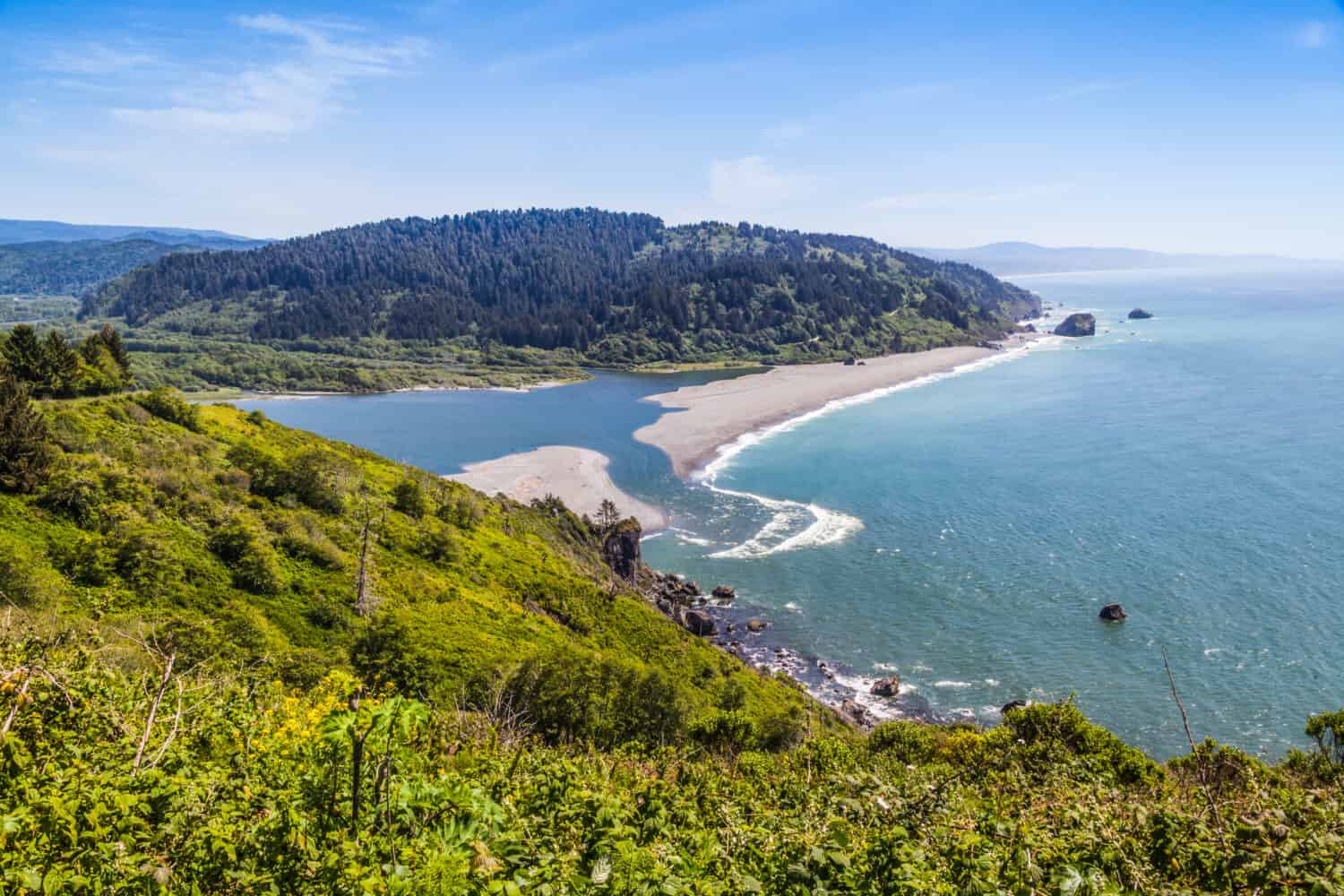
Salmon and trout species begin their migration upstream at the mouth of the Klamath River in Requa, CA.
©Jairo Rene Leiva/Shutterstock.com
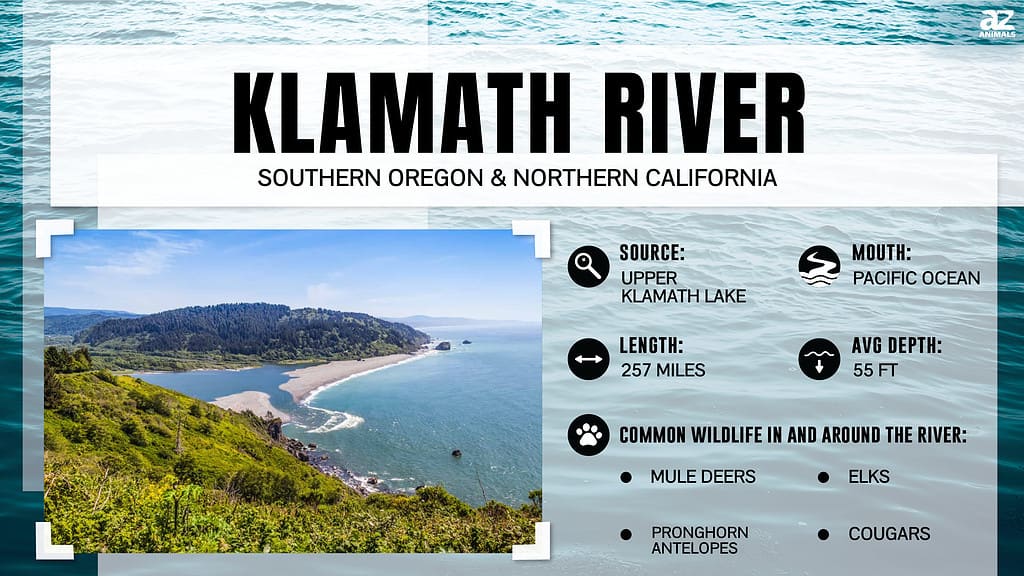
Water Quality in the Klamath River
Water quality is the most significant factor affecting whether or not the Klamath River is safe to swim in. According to the California State Water Resource Control Board, the water quality of the Klamath River is decreasing. This is indicated by several factors including increased water temperature, increased water pH, and toxic algae blooms. These factors all contribute to a loss of fish habitat in the river. Toxic algae blooms are also dangerous to humans who may want to swim and recreate in the river. For people who want to swim in the Klamath River, it is important to first check for any updates about water quality.
The main source of decreasing water quality in the Klamath River is agricultural development along the river. A study in 2019 by the State of Oregon Department of Environmental Quality found DDT, a pesticide that has been illegal since 1972, at 10 different monitoring sites on the Klamath River. Five of these sites had DDT at amounts high enough to accumulate in the tissues of fish.
Additionally, in order to make agriculture possible in the naturally arid region around the Klamath River, four dams were built on it. The next section on fish in the Klamath River explores the environmental impacts of these dams.
Fish in the Klamath River
There are no fish in the Klamath River that are dangerous to humans. However, the health of fish that live in the river is an important indicator of the river’s overall health. The Klamath River is a crucial habitat for anadromous fish, which means fish that migrate upriver from the ocean to spawn. Three anadromous fish species are found in the river. These are Chinook salmon (Oncorhynchus tshawytscha), coho salmon (Oncorhynchus kisutch), and steelhead trout (Oncorhynchus mykiss). The health of these fish populations is affected by human activity on the river, especially by dams and agricultural development.
Chinook salmon is a keystone species in the Pacific Northwest, meaning that it is crucial for the health and survival of its ecosystem. Without Chinook salmon, the ecosystems they are a part of would cease to exist. The Chinook salmon population is an important food source for bears, orcas, seals, and birds of prey such as osprey. In order to preserve the health of the Klamath River, its Chinook salmon and other anadromous fish species need to be protected.
The decreasing water quality and fish populations also negatively impact the Yurok and Karuk people. Yurok and Karuk people are indigenous to the Klamath River watershed and depend on healthy river and fish populations for their way of life.
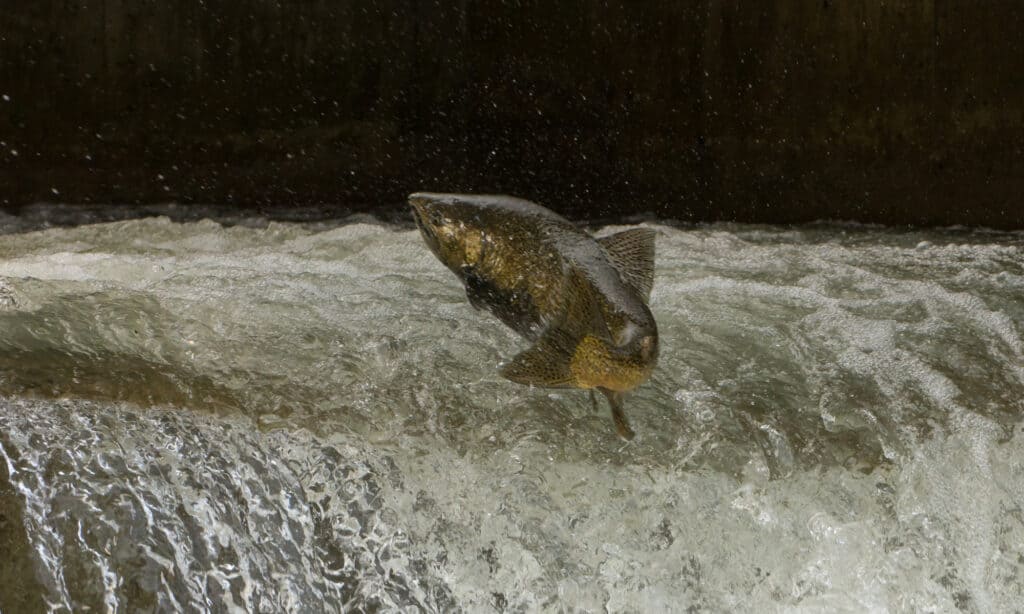
In preparation for the spawning season, the Chinook suddenly changes color!
©Evan Linnell/Shutterstock.com
The Klamath River Dams
There are five hydropower dams along the course of the Klamath River. These dams block migrating fish from reaching their historical spawning sites and create stagnant pools that contribute to toxic algae blooms. Above these dams lies 300 miles of fish spawning habitat that these fish can no longer access. The lack of water flow and blocking of fish habitat has been a primary cause of some significant die-offs of fish in the Klamath River. For example, tens of thousands of fish died below the Iron Gate Dam in 2008. Additionally, in 2021, there was a massive killing of juvenile fish that is expected to negatively impact fish populations for years to come.
However, after decades of effort from the Yurok and Karuk tribes and many environmental organizations, the Klamath River dams are finally being removed. In 2016, the Klamath River Renewal Corporation was formed to oversee the removal of four dams on the Klamath River. This is the largest dam removal project ever in the United States. The removal process began in the spring of 2023 and will be completed by the end of 2024. In addition to the four dam removals, this project also includes ongoing habitat restoration on the Klamath River. The dam removal project is the largest salmon restoration project ever undertaken in the United States.
Snakes in the Klamath River
The Klamath River is safe from any dangerous snakes. In fact, there are no venomous water snakes in California or Oregon. However, there are some venomous snake species that swimmers may encounter on land near the Klamath River. Oregon is home to two venomous snake species, and California is home to nine. These venomous snake species are all rattlesnakes. The two species that live near the Klamath River in Oregon and Northern California are the northern Pacific rattlesnake and the Great Basin rattlesnake.
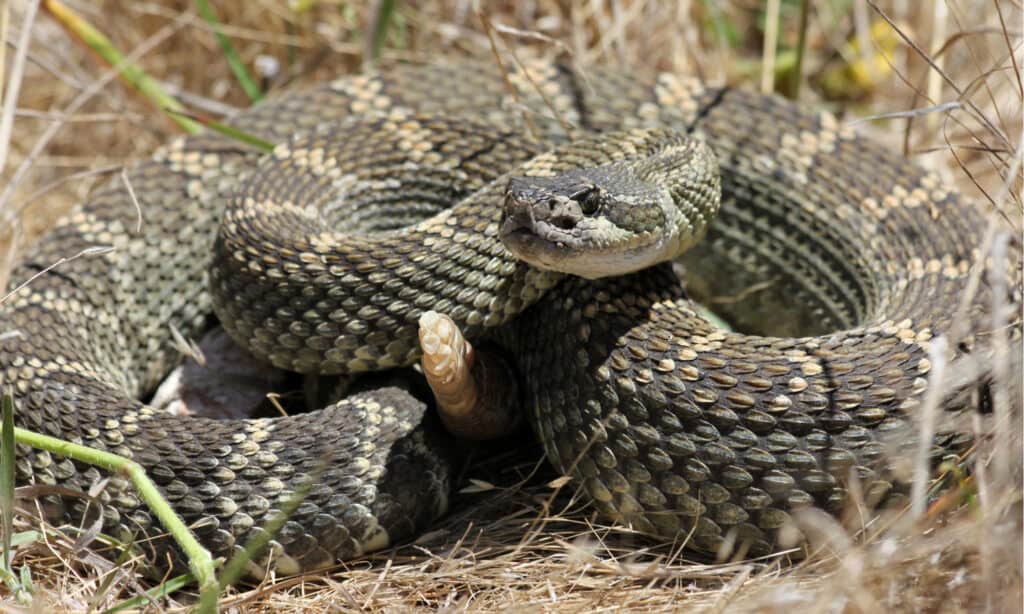
Northern Pacific rattlesnakes were formerly known as western rattlesnakes.
©Ryan M. Bolton/Shutterstock.com
Rattlesnakes are not generally aggressive toward humans and will usually only bite if they are threatened or afraid. There are several things one can do to avoid a rattlesnake bite. First, if you see a snake, respect its space and do not approach it. Additionally, look carefully at any rocks or logs before picking them up or sitting on them. Rattlesnakes blend in with their habitat, so it is important to look closely. Finally, if you are hiking on the Klamath River, stay on established trails. Rattlesnakes tend to avoid trails because they offer nowhere to hide. Instead, they tend to hide in the brush. Going off the trail into brush puts one at risk of disturbing a rattlesnake.
Aside from the two rattlesnake species, all snakes that live near the Klamath River are not venomous. Garter snakes and bull snakes are two common species that are not venomous. However, even though these snakes are not venomous, it is still important to respect their space.
Wildlife Near Klamath River
In addition to the two venomous snakes, there are a couple of other land animals that people swimming in the Klamath River should be aware of. These are black bears and mountain lions. Although attacks on humans are rare for both black bears and mountain lions, it is important to know how to stay safe in their habitat.
For black bears, one of the best things you can do to keep yourself safe is safely store food. Food is the main reason that black bears will approach humans and their camps. Keeping food safely stored in a bear locker, canister, or hanging food bag. If you see a bear, follow the National Park Service guidelines for keeping yourself safe.
Mountain lion sightings are rarer than black bear sightings. Mountain lions prefer to avoid humans and are most active at dawn, dusk, and night. However, if you do see a mountain lion, follow the National Park Service guidelines to get out of the area safely.
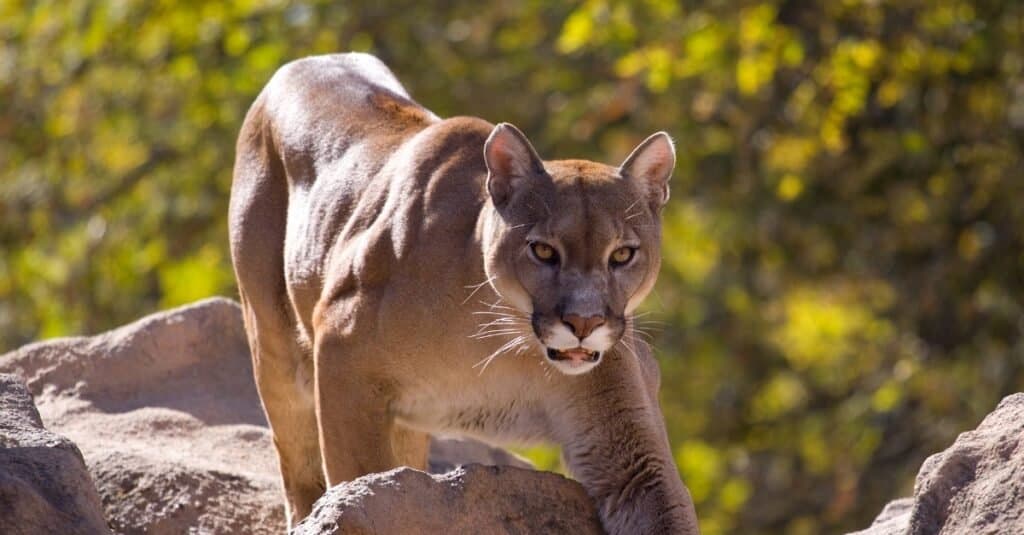
Cougars are large cats, and although not usually aggressive, have been involved in attacks on humans.
©iStock.com/SandmanXX
Conclusion
The Klamath River is safe to swim in, as long as visitors are aware of potentially dangerous animals that live around the river. These animals include the northern Pacific rattlesnake, Great Basin rattlesnake, black bears, and mountain lions. Additionally, swimmers should check for updates about water quality before heading out to the river.
The photo featured at the top of this post is © randy andy/Shutterstock.com
Thank you for reading! Have some feedback for us? Contact the AZ Animals editorial team.



